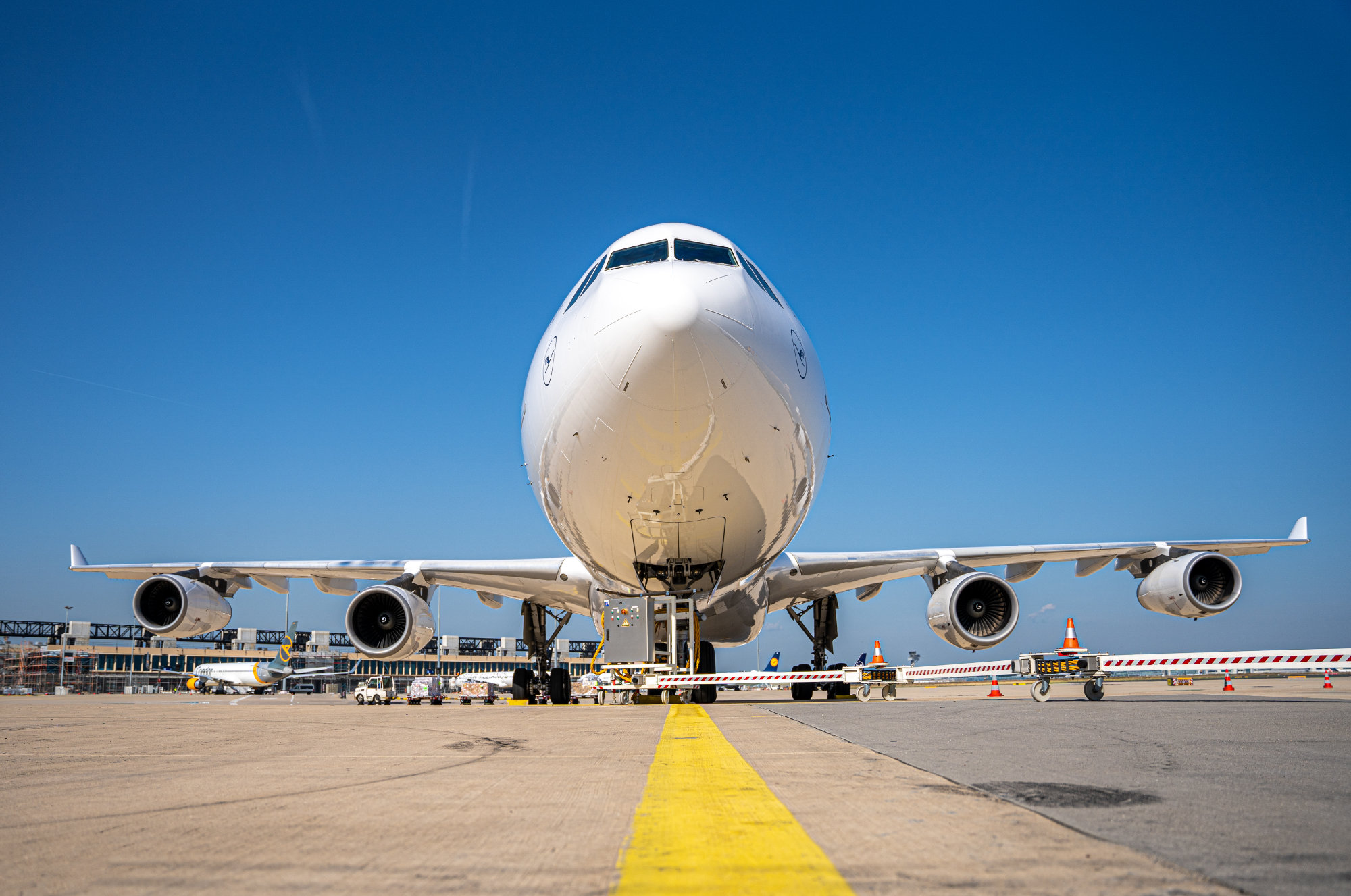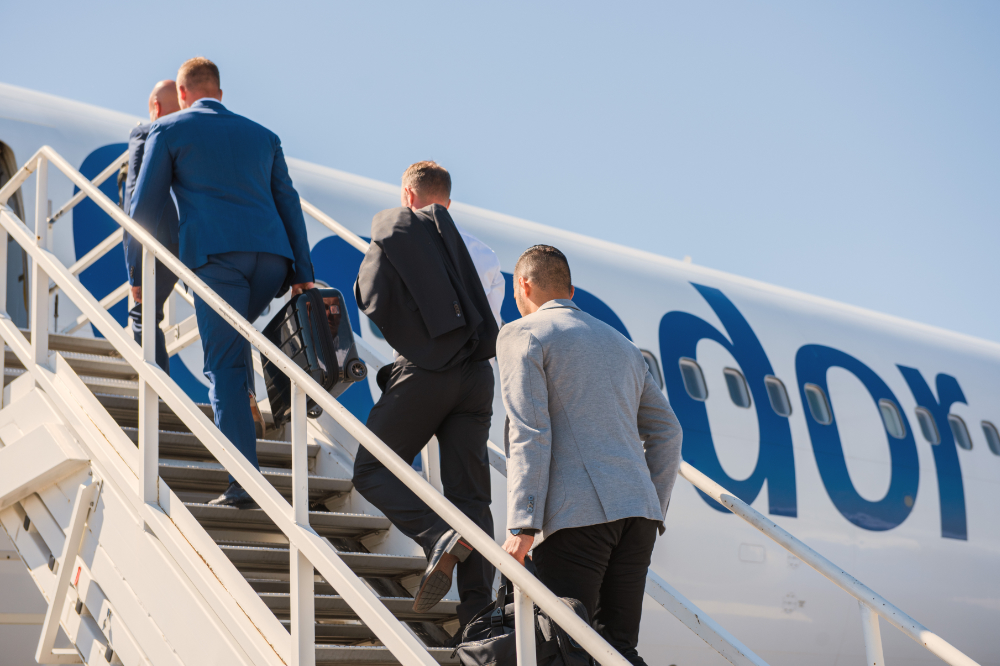European Air-Marshal Network-EIFS (Enhancing In-Flight Security)
In a number of countries, the massive repercussions of the attacks on 11 September 2001 lead to a new law enforcement specialization – the In-Flight Security Officer (IFSO), also referred to as an Air Marshal or Sky Marshal.
Quite a few of these new IFSO units were raised in police organizations that did not even have the beginnings of an idea of where to start doing so. Hence, they sought support from associated governments abroad that already ran such units or programs, for advice and assistance.
Thus, the concept of international cooperation in the field of in-flight security took hold from the very beginning of their existence.
The global aspect of civil aviation serves to underline the importance of international co-operation in this specialized area of law enforcement.

Background and Network History
The first effort to elevate these informal exchanges onto a common platform under a set of voluntarily agreed regulations took place with founding the International In-Flight Security Officer Committee (IIFSOC) in 2006. For almost a decade, the committee members worked at setting quality standards, laying out standard operating procedures in a number of professional areas, and in general began connecting key players and the aviation security community.
In April 2015, the European Commission (EU-COM) adopted the European Agenda on Security which represents an effective and coordinated response at the European level to evolving threats. In the face of these threats to the European Union, EU-COM is thus providing targeted funding to support the Member States in ensuring security. One of the identified priorities is tackling terrorism and the improvement of the protection of public spaces. Part of this protecting public spaces program includes the enhancing of transport security, in particular aviation security.
The Genesis of the Network
The International In-Flight Security Officer Committee (IIFSOC), closely aligned with the European Air Marshal network, is the association of the leading IFSO programs worldwide and was founded in 2006 to intensify international cooperation in this specialized field of aviation security.
After initial contacts between the Directorate General for Migration and Home Affairs (DG HOME) and the IIFSOC, the European Air Marshal Network was formed in 2015 by the European IIFSOC member programs (Austria, Czech Republic, France, Germany, Netherlands, Poland, Romania) to initiate an EU Air Marshal community on In-Flight Security issues.
As such the EU Air Marshal community has a unique law enforcement capability on the topic of In-Flight Security as part of aviation security. The Annual Work Programme 2017 for the Internal Security Fund (Commission Decision (2017) 6343) recognizes this network as a body in a de facto monopoly situation.


Securing the Skies: In-Flight Protection in the EU
The EU Air Marshal Network would like to contribute to the effort to improve aviation security in the EU as transportation means can be and have been a target as well as a means of terrorist attacks. Due to this, the in-flight phase is a critical link in the chain of aviation security where, in lack of access of regular law enforcement authorities from the ground, a terrorist-controlled aircraft presents a cross-border threat to critical infrastructure and public spaces. The potential impact of an aircraft misused as a weapon against a target on the ground is more extensive than the misuse of any other means of transportation.
In April 2015, the European Commission (EU-COM) adopted the European Agenda on Security which represents an effective and coordinated response at the European level to evolving threats. In the face of these threats to the European Union EU-COM is thus providing targeted funding to support the Member States in ensuring security. One of the identified priorities is tackling terrorism and the improvement of the protection of public spaces. Part of this protecting public spaces program includes the enhancing of transport security, in particular aviation security.
Enhancing In-Flight Security in the EU
Current aviation security measures on the ground focus mainly on the prevention of dangerous items reaching the aircraft. This is being accomplished to a certain extent as technical methods on the ground are proving to be more and more reliable at detecting dangerous items, although tests are repeatedly showing that they are not completely failsafe. Preventing dangerous individuals coming aboard an aircraft, on the other hand, is a far more difficult matter.
In-flight security requires a closer look at this issue as there remain more than enough items on board of a commercial passenger aircraft for a person with minimum training and knowledge about cabin and cockpit procedures to execute an in-flight attack, or for terrorists to bypass the security measures and bring dangerous items on board, both with potentially dramatic consequences.
The prevention of this threat falls to the airline crews and for protected flights to the IFSO.
By the activities of this action the EU Air Marshal Network further solidified IFS and the IFSO community with best practices and exchange of expertise and providing comprehensive guidance material on aviation security relevant subjects.


EIFS: Securing the In-Flight Phase of Air Travel
For its unique law enforcement capability on the topic of in-flight security as part of aviation security the EU Air Marshal community was awarded a direct grant under the Internal Security Fund Work Program 2017 and was able to start work on the EIFS project in 2018.
Currently working on their fourth funding period, started on 01 April 2025, EIFS are now looking back on almost seven years of extremely productive work.
Their activities are organized and administrated by a central EIFS Support Office, topics are covered by four working groups (equipment, instructors, tactics and strategy), aiming to improve the individual unit’s operational readiness, standardize training regimes and further enhance co-operation with closely affiliated security entities such as ATLAS, ESG, EEODN, AIRPOL and others.
These inter-network co-operations are further enhanced and formalized under by EIFS membership in the European Commission’s Law Enforcement Networks Working Group (LENWG) and the Protection of Public Spaces Forum.
Past activities
The activities began with the first EIFS cycle on 01 August 2018 and ended with the third funding cycle on 31 March 2025:
A total of 44 workshops, exercises, and training sessions were conducted, with 593 active participants.
These activities first and foremost aimed to enhance and augment the operational capabilities of the active European Air Marshal units and their operatives.
Therefore, EIFS worked on several objectives:
1) Define a standard for Behavior Observation Analysis (BOA) for IFSO
A scientifically supported, comprehensive and current concept regarding the observation and analysis of behavior which could indicate a terrorist threat or imminent terrorist attack.
2) Create standards and best practices for Tactical First Aid (TFA) for IFSO
A practicable IFSO oriented operational concept on TFA for IFSO, combining suitable elements from both the civilian and military sectors. A recommended first aid kit for IFSO and recommendations for airlines concerning medical equipment on board of aircraft.
3) Produce a recommendation for the procedural and tactical framework to achieve interoperability among European IFSO units on their respective national carriers
A feasibility study regarding IFSO operations on foreign carriers within the European IFS community. The aim was, with the support of external legal expertise, to lay a tactical and procedural foundation allowing IFSO to operate on foreign carriers. Core element and baseline is a standard communication concept between European IFSO and crew of European airlines. The findings led to recommendations for European, international or supranational options, preparing the ground for such operations within the European Air Marshal network, specifically defining Standard Operating Procedures (SOPs), a communication concept between IFSO and cockpit crew, and a standardized identification for European IFSO for these operations.
4) Identify and analyze emerging and future threats to aviation security, specifically In-Flight security, and provide recommendations regarding IFSO training, equipment and operations to address these threats
A mid- to long-term future threat prognosis on IFS and recommendations for IFSO operatives on how to respond to these threats. Thereby analyzing the threats, adapting existing SOPs to counter these and giving recommendations regarding operational equipment for IFSO or on-board equipment for commercial passenger aircraft.
5) Define standards for weapon procedures
Any IFSO team arriving at a foreign airport will require support and assistance by local police or security forces. Procedures will need to be pre-established for the IFSO team on how to behave according to national laws and regulations, especially regarding the IFSO’s equipment hand-over to national authorities.
6) Create standards and best practices for post-incident procedures
Any deployment of an IFSO team after an incident on board an aircraft in-flight will trigger a series of post incident procedures not only in the air but also on the ground. This includes a multitude of involved civilian, law enforcement and military entities.
7) Exchange of expertise through regularly held meetings, trainings and internships
The single decisive factor governing any police or law enforcement unit’s operations, regardless of their area of responsibility, is the constant need to adapt to changing environments.
8) Exchange on technology and equipment developments suitable for IFSO training and operations
Pushing forward EIFS efforts in respect to handling a special threat situation in-flight, the group discussed and worked on detection and Personal Protection Equipment (PPE) to such scenarios. A second strand of work was done by researching and discussing possible communication systems supporting Air-Marshal operations. Due to the complexity of such systems, and the ever fast-pacing technology development, research in this vital area of IFSO operations will remain one of EIFS’ focal points for the foreseeable future.
9) Developing new training regimes and conducting training with other Law Enforcement Networks
Bringing already existing training concepts back to the table and combining these with new threats, EIFS compiled a whole new training course on special threat situations and casualty treatment. The inclusion of these new skills with regular national Air-Marshal training regimes will further enhance the operators’ abilities to counter such attacks and mitigate its effects. Any deployment of an IFSO team after an incident on board an aircraft in-flight will trigger a series of post incident procedures not only in the air but also on the ground. A handover sequence from the deployed IFSO team to special intervention police forces represents a potentially demanding situation. Thus, the implementation of joint trainings between these two specialized law enforcement entities is seen as vital. This was done via the already well-established cooperation between EIFS and the ATLAS Group (special intervention units).
10) Develop new Standard Operating Procedures (SOP) based on new operational concepts
In recent years, most EIFS member units have been tasked with mission flights based on information regarding specific travelers who are deemed a specific risk to in-flight security. The operational coverage of such flights entails specialized skills which, during this activity were standardized and added to the national member unit’s portfolios. The possibly severe effects of a special threat situation during the in-flight phase of a passenger aircraft demand a decisive response at the earliest possible opportunity from the IFSO team on board. Based on mere suspicion, the use of maximum force in such a situation may not be justified at such an early stage. Thus, the IFSO need to rely on less severe intervention techniques that allow to subdue a suspect and while still maintaining officer safety principles.
11) Joint threat evaluation/ mission planning for major sports events
Large-scale and high-profile international sports events, such as the Paris Olympics and the UEFA EURO 2024, from a terrorist point of view create a multitude of opportunities for high-visibility attacks. Thus, security forces tasked with the protection of such events must seek to cooperate amongst each other in order to fulfil their mission. With their joint approach to both threat evaluation and mission planning before and during both events, EIFS assured a maximum coverage of relevant flights and thus significantly contributed to public security at and above both events.
12) Interoperability of IFSO; joint IFSO training
While civilian aviation companies continue to make use of cost-saving practices such as the leasing-out of flights to low-cost airlines which often operate under a foreign flag, this creates a multitude of legal challenges for the individual, national IFSO units. EIFS continues to standardize their member units’ operational principles, training and communication protocols. Joint trainings among the member units serve to familiarize the individual IFSO with the concept of joint, bi-national deployments. The mid-to long-term goal of these trainings is a true interoperability among all EIFS member units, providing in-flight security throughout the European Union with an additional element of flexibility able to counter such phenomena as mentioned above.
1) Enhancing operational readiness through market research and equipment testing
In order to effectively respond to the evolving threat landscape, it is essential to continuously identify and evaluate innovative equipment solutions. By conducting comprehensive market studies and rigorous testing procedures, the aim is to detect emerging technologies that can enhance the operational capabilities of the EIFS units.
2) Ongoing research on secure communication systems aimed at a unified national recommendation
The research into secure communication systems continues with the objective of developing a unified recommendation for use by the EIFS units and the respective national administrations.
3) Work on countermeasures against special threat situations and improvised explosive device (IED) threats/ advancing research and development of equipment against special threat situation /IED threats
Insights obtained from special threat situation related workshops are being systematically translated into targeted research and the testing of standardized, operationally practicable special threat situation equipment. In addition, dedicated efforts are focused on the development of effective countermeasures against special threat situations and improvised explosive device threats.
4) Establishment of the first EIFS joint training center
As part of the EIFS network’s development phase, efforts are underway to identify and acquire the first dedicated joint training center. This facility will serve as a central hub for the delivery of specialized training activities, exercises, and knowledge exchange related to the EIFS network’s objectives.
5) Planning and execution of a joint exercise with partner units/networks/authorities
Preparations are underway to plan, organize, and carry out a joint exercise involving various units, networks, and relevant authorities. The objective of this exercise is to strengthen interagency cooperation, improve operational coordination, and test joint procedures under realistic conditions.
Current activities
The current EIFS cycle spans the period from 01 April 2025 to 31 March 2027:
Planned activities foresee:
- 20 workshops/exercises/trainings
- 342 active participants